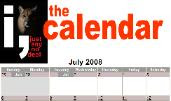WeNews commentator
The bailout of Wall Street is particularly galling for women on the lower rungs of the economic ladder, says Mimi Abramovitz. They've already spent the past 30 years steadily losing ground without anyone seeming to notice or care.
Editor's Note: The following is a commentary. The opinions expressed are those of the author and not necessarily the views of Women's eNews.

(WOMENSENEWS)--Today we sit and watch as the high-rolling gamblers and critics of "big government" take welfare. These are many of the same people who thought it was just fine to deprive millions of women of critical resources and let them fend for themselves.
Even before the catastrophic news out of Wall Street in recent days, women have been worried about their economic security.
Last March a Gallup poll found that in the past two years more women than men said that they worry about the economy (64 percent versus 57 percent). The same holds for health care, crime, the environment, drug use, unemployment, hunger and homelessness.
More...More men are employed by Wall Street and more men have money invested there. That means the male anxiety meter is probably much higher now that they risk losing their jobs, pensions, portfolios and homes. But women's worries have probably shot up even more.
Women are likely to lead in the economic-anxiety gap because distressing economic events fall harder on people with less. "I don't play the stock market, but it does affect us. It affects me personally. It affects the little guy," a female dispatch supervisor of a limo company that serves investment bank employees recently told the New York Times.
The same holds for all the secretaries and housekeepers who keep investment houses clean and running.
Decades of Lost Ground
But what makes the bailout of the fat tomcats so galling is that women at the bottom of the economic ladder have lost ground during the last 30 years, with very few seeming to notice or care.
From F.D.R.'s New Deal in the 1930s to L.B.J.'s Great Society in the 1970s, the expansion of government programs for the middle class and the poor--Social Security, Medicare, Medicaid, food stamps, public assistance, as well as health and social services--provided a modest economic backup for women who predominate among recipients.
Great Depression leaders who saw government as the solution to that economic crisis bailed out banks in exchange for tighter regulations to curb speculation. But they also created cash-assistance programs that increased women's purchasing power and protected them against economic hardship.
Those programs redistributed income downward and expanded the capacity of the federal government to kick-start the economy while cushioning consumers and workers from the vagaries of the market.
Beginning with President Carter in the mid 1970s, our leaders changed their tune, blaming economic woes on "big government." Successive administrations relaxed the rules on financial markets and cut funding for the safety net.
Benefits Didn't Trickle Down
Advocates of "less government" promised that benefits would "trickle down" to the rest of us. Instead their laissez-faire strategy weakened government benefits, one of the three interlocking pillars of economic support counted on by thousands of women from all walks of life.
The Congressional Budget Office recently reported that government spending for domestic discretionary programs fell from a high of 4.8 percent of national output, or gross domestic product, in 1978 to 3.4 percent in 2007. That equals billions of dollars in cuts. Except for rising health care costs, spending on entitlement programs--such as Social Security, unemployment insurance and public assistance--also fell from 8.5 percent of the gross domestic product in 1983 to 7 percent in 2007.
During the past eight years, war spending zoomed ahead, bringing us to the present spectacle, where we see U.S. military spending exceeding that of the rest of the world combined.
Meanwhile, Bush tax policies diverted dollars from public services and boosted corporate profits to a record high of almost 14 percent of national income while the share going to wages dropped to its lowest level since 1929. Combined with relaxed government oversight and rampant speculation the way was paved for abusive mortgage practices that turned Wall Street into one big profit bubble waiting to pop.
With these excesses as a backdrop, women saw their other two pillars of economic security weaken as well: marriage to a wage-earner and paid employment.
Falling marriage rates combined with three decades of sagging male breadwinner wages have undercut the capacity of matrimony to provide women with the financial security it once offered.
Wobbling Wages and Work
From 1979 to 2006, the real value of the median weekly wage of men 25 years and older fell steadily to $797 from $807.
The massive entry of women into the work force since World War II--one of the most significant social trends in modern U.S. history--gave them a third pillar of support. But this too is now wobbling.
As male wages stagnated many women went to work--not as a matter of choice, as headlines about women opting in and out might suggest--but just to make ends meet. Between 1970 and 2005 the proportion of married couples with two earners jumped to 62 percent from about 46 percent, Labor Department data show. The U.S Women's Bureau finds wives' contribution to family income rose to 35 percent from 26 percent.
But many of today's 68 million wage-earning women have recently suffered more job losses than men and a larger drop in wages than the general population, according to the Women's Bureau. In 2006 full-time female workers earned an average of $627 week or about $32,000 a year.
While we watch the spectacle of the government channeling untold billions of taxpayer dollars into failing Wall Street giants the three pillars of economic support for women--the safety net, marriage and wages--continue to crumble.
The public bailout of corporate America may be necessary given the risks of a collapse to the global economy. But why is it that the rich and reckless accept "welfare" for themselves while steadfastly rejecting the same for women in need? It's time to take a billion here and there to assist the women raising families on too little income to keep a roof over their heads.
Mimi Abramovitz, the Bertha Capen Reynolds Professor of Social Policy at Hunter College School of Social Work, is the author of "Regulating the Lives of Women: Social Policy From Colonial Times to the Present," the award-winning "Under Attack, Fighting Back: Women and Welfare in the U.S." and co-author of "Taxes Are A Women's Issue: Reframing the Debate." She is currently writing "Gender Obligations: The History of Low-Income Women's Activism Since 1900."
Women's eNews welcomes your comments. E-mail us at editors@womensenews.org.









